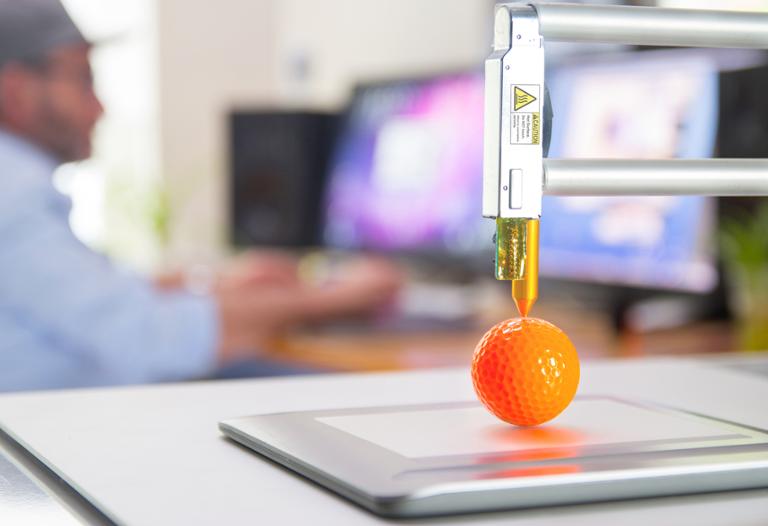 While the revolutionary benefits of 3D printing have been touted for years, significant challenges remain before the technology can gain widespread adoption, according to a recent Spiceworks survey. The results of that survey, which queried 566 tech pros from around the world, suggested that many are still waiting for a clear frontrunner to emerge in 3D printing for business use. In fact, nearly 60 percent of tech pros said they couldn’t name the most innovative company in 3D printing, perhaps because their firms currently have limited-use cases for the technology, and haven’t yet begun evaluating the hardware’s true capabilities. Based on respondent data, the survey suggested that 3D printing could benefit industries as diverse as education, manufacturing, construction, and engineering. While tech pros are most likely to evaluate Hewlett-Packard and MakerBot 3D printers for their organizations, other providers such as Formlabs, Ultimaker and Flashforge may also see some growth over the next five years. "Like with any technology, increases in adoption should lead to manufacturing efficiencies that bring the cost of 3D printers down," Peter Tsai, IT analyst at Spiceworks, told Dice. "However, we don’t expect to see mass adoption of 3D printers in businesses in the near future." As Tsai noted, although 3D printing’s usage rates are much higher in industries like manufacturing, construction, engineering, and education, only 30 percent of organizations expect to use 3D printers by 2021. Education enjoys a high adoption rate of 3D printers because they can be great hands-on teaching tools, he added: “For example, students can print a tangible representation of geometric patterns in math class or parts of a cell in a biology class.” Tsai added that, with the recent emphasis on growth in STEM jobs, spending on 3D printers is an investment that makes sense for many schools to make. Ramon Pastor, vice president and general manager of HP’s large format printing business, told Dice that 3D printing has been associated with a variety of consumer and educational use cases, but HP is focused on the opportunities in industrial 3D printing market. He anticipated strong adoption to reinvent industrial design and manufacturing. “As adoption by service bureaus and manufacturers increases, we expect the most traction to come initially in the aerospace, automotive, consumer packaged goods and medical industries,” he said. The 3D printing industry faces a variety of challenges, ranging from the type and price of potential materials, to rethinking entire supply chains for portions of the industrial landscape. “In addition, the technology itself must continue to evolve," Pastor added. “Speed, cost, quality are all key elements of the 3D printing value proposition that need to improve to push the industry from prototyping to manufacturing.” Pastor believes it’s critical for innovation to continue across the entire 3D ecosystem: “Beyond continuing to improve the speed, cost, and quality, there will be tremendous innovation that will open up endless possibilities for manufacturers, from printing embedded circuitry into parts to allowing new materials to be produced.” John Dulchinos, vice president of global automation and 3D printing at Jabil Circuit, a manufacturing-services company based in St. Petersburg, Florida, suggested there are four potential gaps when it comes to bringing the technology into mainstream manufacturing. These gaps include cost-effective platforms, quality control concerns, infrastructure needs and harmonization of the IT systems required to manage product lifecycle management (PLM), and traditional manufacturing enterprise systems (MES). “Until reliable sources of certified parts exist, 3D printing will remain relegated to prototyping and personalized tchotchke production,” said Dulchinos, who predicted that the adoption rates of 3D printing could accelerate significantly as companies remove the friction and risk associated with sourcing additive parts. As the Spiceworks report indicated, 3D printing has found a foothold among professionals in the dental, medical, jewelry, film, and fashion industries. "Oftentimes, if a person learns or is familiar with CAD software and design, they can be able to find 3D printing applications within their industry—whether they are using 3D printing for rapid prototyping or final production," 3D printing specialist Formlabs spokeswoman Connie Zheng told Dice. She explained that, in the past, desktop 3D printers were mostly for tinkerers and hobbyists. From quality and technology standpoints, the machines were finicky and most of them used a plastic filament (FDM), so the final product was often unpolished and rough around the edges. But the technology continues to evolve—and with that, corporate interest in using 3D printing. The big question is how long it will take for innovators to overcome the aforementioned challenges.
While the revolutionary benefits of 3D printing have been touted for years, significant challenges remain before the technology can gain widespread adoption, according to a recent Spiceworks survey. The results of that survey, which queried 566 tech pros from around the world, suggested that many are still waiting for a clear frontrunner to emerge in 3D printing for business use. In fact, nearly 60 percent of tech pros said they couldn’t name the most innovative company in 3D printing, perhaps because their firms currently have limited-use cases for the technology, and haven’t yet begun evaluating the hardware’s true capabilities. Based on respondent data, the survey suggested that 3D printing could benefit industries as diverse as education, manufacturing, construction, and engineering. While tech pros are most likely to evaluate Hewlett-Packard and MakerBot 3D printers for their organizations, other providers such as Formlabs, Ultimaker and Flashforge may also see some growth over the next five years. "Like with any technology, increases in adoption should lead to manufacturing efficiencies that bring the cost of 3D printers down," Peter Tsai, IT analyst at Spiceworks, told Dice. "However, we don’t expect to see mass adoption of 3D printers in businesses in the near future." As Tsai noted, although 3D printing’s usage rates are much higher in industries like manufacturing, construction, engineering, and education, only 30 percent of organizations expect to use 3D printers by 2021. Education enjoys a high adoption rate of 3D printers because they can be great hands-on teaching tools, he added: “For example, students can print a tangible representation of geometric patterns in math class or parts of a cell in a biology class.” Tsai added that, with the recent emphasis on growth in STEM jobs, spending on 3D printers is an investment that makes sense for many schools to make. Ramon Pastor, vice president and general manager of HP’s large format printing business, told Dice that 3D printing has been associated with a variety of consumer and educational use cases, but HP is focused on the opportunities in industrial 3D printing market. He anticipated strong adoption to reinvent industrial design and manufacturing. “As adoption by service bureaus and manufacturers increases, we expect the most traction to come initially in the aerospace, automotive, consumer packaged goods and medical industries,” he said. The 3D printing industry faces a variety of challenges, ranging from the type and price of potential materials, to rethinking entire supply chains for portions of the industrial landscape. “In addition, the technology itself must continue to evolve," Pastor added. “Speed, cost, quality are all key elements of the 3D printing value proposition that need to improve to push the industry from prototyping to manufacturing.” Pastor believes it’s critical for innovation to continue across the entire 3D ecosystem: “Beyond continuing to improve the speed, cost, and quality, there will be tremendous innovation that will open up endless possibilities for manufacturers, from printing embedded circuitry into parts to allowing new materials to be produced.” John Dulchinos, vice president of global automation and 3D printing at Jabil Circuit, a manufacturing-services company based in St. Petersburg, Florida, suggested there are four potential gaps when it comes to bringing the technology into mainstream manufacturing. These gaps include cost-effective platforms, quality control concerns, infrastructure needs and harmonization of the IT systems required to manage product lifecycle management (PLM), and traditional manufacturing enterprise systems (MES). “Until reliable sources of certified parts exist, 3D printing will remain relegated to prototyping and personalized tchotchke production,” said Dulchinos, who predicted that the adoption rates of 3D printing could accelerate significantly as companies remove the friction and risk associated with sourcing additive parts. As the Spiceworks report indicated, 3D printing has found a foothold among professionals in the dental, medical, jewelry, film, and fashion industries. "Oftentimes, if a person learns or is familiar with CAD software and design, they can be able to find 3D printing applications within their industry—whether they are using 3D printing for rapid prototyping or final production," 3D printing specialist Formlabs spokeswoman Connie Zheng told Dice. She explained that, in the past, desktop 3D printers were mostly for tinkerers and hobbyists. From quality and technology standpoints, the machines were finicky and most of them used a plastic filament (FDM), so the final product was often unpolished and rough around the edges. But the technology continues to evolve—and with that, corporate interest in using 3D printing. The big question is how long it will take for innovators to overcome the aforementioned challenges. 3D Printing Market Expands, Despite Challenges
 While the revolutionary benefits of 3D printing have been touted for years, significant challenges remain before the technology can gain widespread adoption, according to a recent Spiceworks survey. The results of that survey, which queried 566 tech pros from around the world, suggested that many are still waiting for a clear frontrunner to emerge in 3D printing for business use. In fact, nearly 60 percent of tech pros said they couldn’t name the most innovative company in 3D printing, perhaps because their firms currently have limited-use cases for the technology, and haven’t yet begun evaluating the hardware’s true capabilities. Based on respondent data, the survey suggested that 3D printing could benefit industries as diverse as education, manufacturing, construction, and engineering. While tech pros are most likely to evaluate Hewlett-Packard and MakerBot 3D printers for their organizations, other providers such as Formlabs, Ultimaker and Flashforge may also see some growth over the next five years. "Like with any technology, increases in adoption should lead to manufacturing efficiencies that bring the cost of 3D printers down," Peter Tsai, IT analyst at Spiceworks, told Dice. "However, we don’t expect to see mass adoption of 3D printers in businesses in the near future." As Tsai noted, although 3D printing’s usage rates are much higher in industries like manufacturing, construction, engineering, and education, only 30 percent of organizations expect to use 3D printers by 2021. Education enjoys a high adoption rate of 3D printers because they can be great hands-on teaching tools, he added: “For example, students can print a tangible representation of geometric patterns in math class or parts of a cell in a biology class.” Tsai added that, with the recent emphasis on growth in STEM jobs, spending on 3D printers is an investment that makes sense for many schools to make. Ramon Pastor, vice president and general manager of HP’s large format printing business, told Dice that 3D printing has been associated with a variety of consumer and educational use cases, but HP is focused on the opportunities in industrial 3D printing market. He anticipated strong adoption to reinvent industrial design and manufacturing. “As adoption by service bureaus and manufacturers increases, we expect the most traction to come initially in the aerospace, automotive, consumer packaged goods and medical industries,” he said. The 3D printing industry faces a variety of challenges, ranging from the type and price of potential materials, to rethinking entire supply chains for portions of the industrial landscape. “In addition, the technology itself must continue to evolve," Pastor added. “Speed, cost, quality are all key elements of the 3D printing value proposition that need to improve to push the industry from prototyping to manufacturing.” Pastor believes it’s critical for innovation to continue across the entire 3D ecosystem: “Beyond continuing to improve the speed, cost, and quality, there will be tremendous innovation that will open up endless possibilities for manufacturers, from printing embedded circuitry into parts to allowing new materials to be produced.” John Dulchinos, vice president of global automation and 3D printing at Jabil Circuit, a manufacturing-services company based in St. Petersburg, Florida, suggested there are four potential gaps when it comes to bringing the technology into mainstream manufacturing. These gaps include cost-effective platforms, quality control concerns, infrastructure needs and harmonization of the IT systems required to manage product lifecycle management (PLM), and traditional manufacturing enterprise systems (MES). “Until reliable sources of certified parts exist, 3D printing will remain relegated to prototyping and personalized tchotchke production,” said Dulchinos, who predicted that the adoption rates of 3D printing could accelerate significantly as companies remove the friction and risk associated with sourcing additive parts. As the Spiceworks report indicated, 3D printing has found a foothold among professionals in the dental, medical, jewelry, film, and fashion industries. "Oftentimes, if a person learns or is familiar with CAD software and design, they can be able to find 3D printing applications within their industry—whether they are using 3D printing for rapid prototyping or final production," 3D printing specialist Formlabs spokeswoman Connie Zheng told Dice. She explained that, in the past, desktop 3D printers were mostly for tinkerers and hobbyists. From quality and technology standpoints, the machines were finicky and most of them used a plastic filament (FDM), so the final product was often unpolished and rough around the edges. But the technology continues to evolve—and with that, corporate interest in using 3D printing. The big question is how long it will take for innovators to overcome the aforementioned challenges.
While the revolutionary benefits of 3D printing have been touted for years, significant challenges remain before the technology can gain widespread adoption, according to a recent Spiceworks survey. The results of that survey, which queried 566 tech pros from around the world, suggested that many are still waiting for a clear frontrunner to emerge in 3D printing for business use. In fact, nearly 60 percent of tech pros said they couldn’t name the most innovative company in 3D printing, perhaps because their firms currently have limited-use cases for the technology, and haven’t yet begun evaluating the hardware’s true capabilities. Based on respondent data, the survey suggested that 3D printing could benefit industries as diverse as education, manufacturing, construction, and engineering. While tech pros are most likely to evaluate Hewlett-Packard and MakerBot 3D printers for their organizations, other providers such as Formlabs, Ultimaker and Flashforge may also see some growth over the next five years. "Like with any technology, increases in adoption should lead to manufacturing efficiencies that bring the cost of 3D printers down," Peter Tsai, IT analyst at Spiceworks, told Dice. "However, we don’t expect to see mass adoption of 3D printers in businesses in the near future." As Tsai noted, although 3D printing’s usage rates are much higher in industries like manufacturing, construction, engineering, and education, only 30 percent of organizations expect to use 3D printers by 2021. Education enjoys a high adoption rate of 3D printers because they can be great hands-on teaching tools, he added: “For example, students can print a tangible representation of geometric patterns in math class or parts of a cell in a biology class.” Tsai added that, with the recent emphasis on growth in STEM jobs, spending on 3D printers is an investment that makes sense for many schools to make. Ramon Pastor, vice president and general manager of HP’s large format printing business, told Dice that 3D printing has been associated with a variety of consumer and educational use cases, but HP is focused on the opportunities in industrial 3D printing market. He anticipated strong adoption to reinvent industrial design and manufacturing. “As adoption by service bureaus and manufacturers increases, we expect the most traction to come initially in the aerospace, automotive, consumer packaged goods and medical industries,” he said. The 3D printing industry faces a variety of challenges, ranging from the type and price of potential materials, to rethinking entire supply chains for portions of the industrial landscape. “In addition, the technology itself must continue to evolve," Pastor added. “Speed, cost, quality are all key elements of the 3D printing value proposition that need to improve to push the industry from prototyping to manufacturing.” Pastor believes it’s critical for innovation to continue across the entire 3D ecosystem: “Beyond continuing to improve the speed, cost, and quality, there will be tremendous innovation that will open up endless possibilities for manufacturers, from printing embedded circuitry into parts to allowing new materials to be produced.” John Dulchinos, vice president of global automation and 3D printing at Jabil Circuit, a manufacturing-services company based in St. Petersburg, Florida, suggested there are four potential gaps when it comes to bringing the technology into mainstream manufacturing. These gaps include cost-effective platforms, quality control concerns, infrastructure needs and harmonization of the IT systems required to manage product lifecycle management (PLM), and traditional manufacturing enterprise systems (MES). “Until reliable sources of certified parts exist, 3D printing will remain relegated to prototyping and personalized tchotchke production,” said Dulchinos, who predicted that the adoption rates of 3D printing could accelerate significantly as companies remove the friction and risk associated with sourcing additive parts. As the Spiceworks report indicated, 3D printing has found a foothold among professionals in the dental, medical, jewelry, film, and fashion industries. "Oftentimes, if a person learns or is familiar with CAD software and design, they can be able to find 3D printing applications within their industry—whether they are using 3D printing for rapid prototyping or final production," 3D printing specialist Formlabs spokeswoman Connie Zheng told Dice. She explained that, in the past, desktop 3D printers were mostly for tinkerers and hobbyists. From quality and technology standpoints, the machines were finicky and most of them used a plastic filament (FDM), so the final product was often unpolished and rough around the edges. But the technology continues to evolve—and with that, corporate interest in using 3D printing. The big question is how long it will take for innovators to overcome the aforementioned challenges. 


